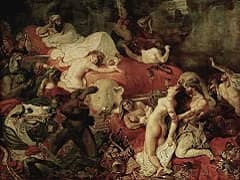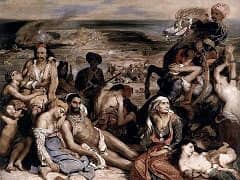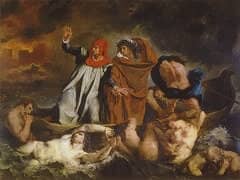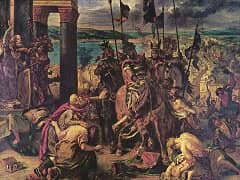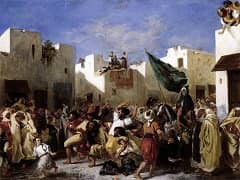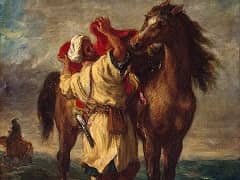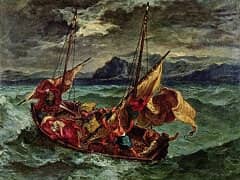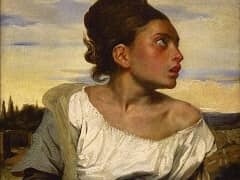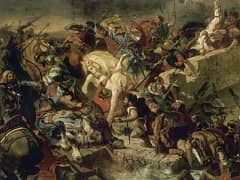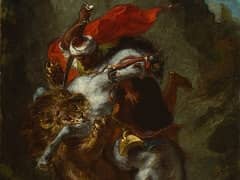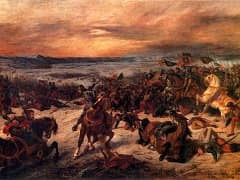Lion Hunt by Eugene Delacroix
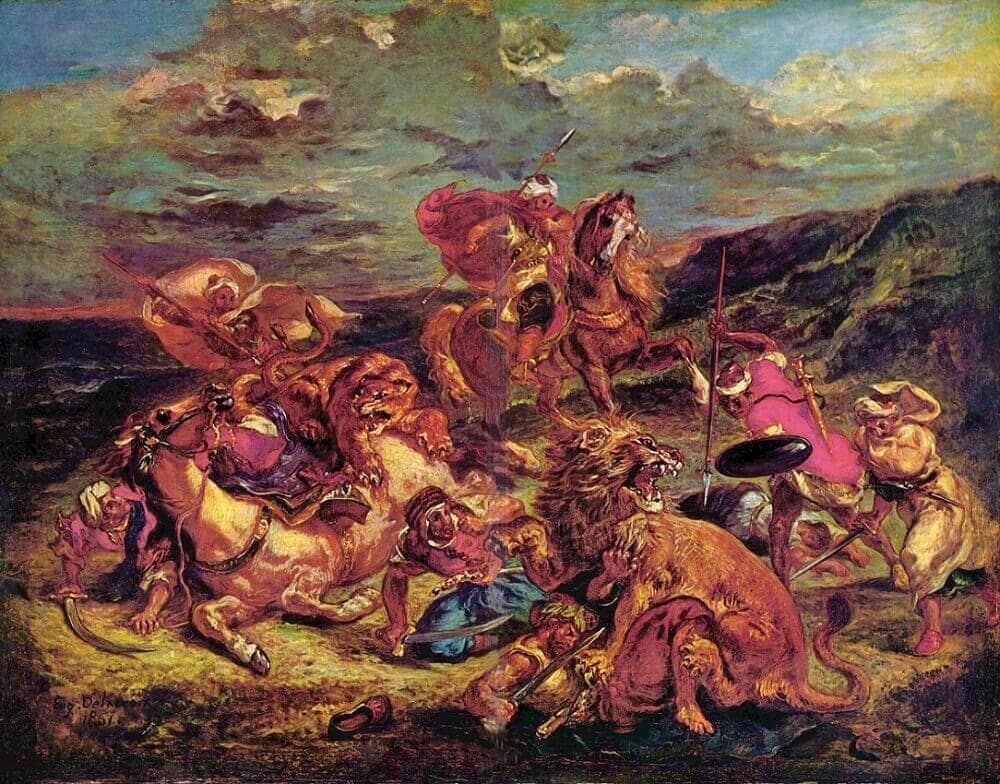
We have already seen how this theme of the lion hunt had proved particularly attractive to Delacroix. The influence of Lion Hunt by Peter Paul Rubens is ever present, combined with direct observation of wild animals at the Jardin des Plantes in company with the animal sculptor Barye. And one can also detect memories of the Moroccan voyage of 1832, in the exotic atmosphere of the decor and the costumes of the characters.
This is the last of his large Hunts, dated 1861, following the one in the Boston Museum of Fine Arts, dated 1858.
Delacroix, in the painting shown here, returns to a composition akin to that of the hunt in the Bordeaux museum. Moreover he uses again one of the most impressive elements of that picture, the lion turning back on its attacker. But, as Jean Cassou has judiciously pointed out, "This is less a matter of a 'hunt,' a word which too clearly evokes the superior power of man, than of a struggle Indeed, we have here a violent grappling of man and beast, with the horsemen thrown from their mounts, the steeds dying, and the whole tragedy of a struggle to the death, in all of its ferocity and tumultuous dynamism.


